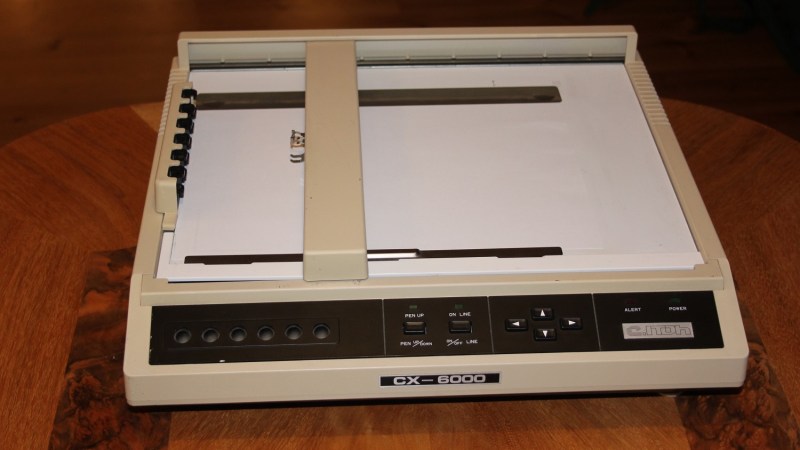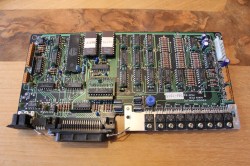[Terje Io] decided to breathe new life into an old pen plotter — the CX6000 from C. Itoh, a Japanese company that made several printers for Apple in the 1980s. He keeps most of the framework, but the electronics get a major overhaul. The old motors are replaced, the controller and motor drivers are modernized using a Raspberry Pi Pico and stepper motor drivers. After tending to other auxiliary electronics like the control panel and limit switches, it’s time to deal with the firmware.
Rather than reinvent the wheel, [Terje] sensibly built upon existing projects and refactored them for his application. G-Code processing is done by grblHAL, with an added mode to handle HPGL code. He modified the firmware from Motöri the Plotter project to parse HPGL, making his new CX6000+ bilingual.
We covered Motöri way back in 2009, and more recently we wrote about the Teensy Controller using grblHAL, one of the 32-bit big brothers of GRBL. Have you ever restored one of these old plotters? Or is it easier to just build your own these days?


















My huge Calcomp 1039 is still waiting in the queue to be fixed. AFAIK there are some ram errors and the printer just hangs during startup. I was thinking along the same lines if i could not get it going with the stock boards, but some other more interesting things came along…
Aha, that looks rather like my Radio Shack FP-215 http://ecloud.org/manuals/Radio%20Shack%20TRS-80%20FP-215%20Pen%20Plotter%20manual.pdf . Must have been a contract job.
I was thinking for years about whether to do something like that to it: on one hand I can make it work outside the US, on the other… it’s vintage electronics, and last time I checked, it was still working fine as-is (provided that one still has a computer with a parallel port).
Thanks, this is it. From the documentation I can see it does not use HPGL but a rather limited set of commands for plotting.
I looked through the article to find out the motivation for doing this but didn’t see it.
Was the plotter broken and unfixable? That the builder wanted to have it understand HPGL? Or just to refit most of the guts with a Pi, just because?
It was not broken but unusable due to having a parallel port and an odd serial port no modern computer has.
I did it because I wanted
1. to make it work connected to a modern computer.
2. to see if I could add a HPGL interpreter to grblHAL, which I did by adding it as an optional plugin.
3. to provide a PCB design and code to the community that could be used for plotter builds or restorations.
4. add it as a test device for grblHAL development.
It’s not at all difficult to run many old serial devices off modern machines. I do this myself with a USB to serial converter (very cheap, ~10 USD and plentiful) which connects a 1982-made rack-mount paper tape reader to a Win10 laptop and have been archiving paper tapes from 1969 with no problems whatsoever.
The original board looks like a bit of a gem to play with. 9 (open collector) outputs, Button/light I/O. 8-bit (parallel) port that could be converted to bidirectional by changing the adaptor board with the 74373 and running a wire for /WE. Easy to make an adaptor for a ZIP for modern FLASH that plugs into the EPROM socket.
The updated board looks a lot like a totally different board! Nice effort. I’m doing the same to a very dumb Calcomp that was the first “affordable” completely controllable plotter around 1980. Meaning it takes 8.5×11″ (A4) paper and has pen up/down and step up-down-right-left over RS232. The driving software was quite a learning experience back then. (A simple aluminum box, 2 steppers, and some pulleys. $1000 1980 dollars.)
I found it in a bin. Houston Instruments, not Calcomp. It is scheduled to have motors replaced and silent step driver chips. And a PSU that does not have a big heavy transformer. Then use it to ?????